|
Could a forgotten, centuries-old "one-room schoolhouse" teaching method hold the key to unlocking natural musical ability? When it comes to music teaching, we wish we could turn back time! Could a forgotten, centuries-old "one-room schoolhouse" teaching model hold the key to unlocking natural musical ability? Let's take a look at what happens (and doesn't happen) during today's modern private lessons.
Nothing against our childhood music lessons (I dearly loved my piano teacher, and modeled my first 20 years of music teaching after her). But, after decades of teaching the usual 30-minute weekly lessons, we've made a discovery: the private lesson is BACKWARD! If you've ever experienced private lessons, they were most likely 30 minutes once a week (mine were, too). Between lessons, on your own, is when you were expected to make the real progress - to remember what was taught/fixed during the lesson, make improvements, memorize stuff, drill on exercises and scales. Then, at the next lesson, the pressure was on to present all that...perfectly...then grab the next assignments. Your teacher sat next to you, ever at the ready to correct mistakes (sometimes before you even made them!). There's a problem with these "traditional" private lessons, and it puts music learners at a huge disadvantage, without even realizing it. Let's examine some serious and obvious flaws with that model...and how to fix them! Flaws with the traditional private 30-minute weekly lesson: LESSONS ARE TOO SHORT Thirty minutes is simply not enough time to cover everything necessary to make fast musical progress, or to allow students to make a true physical connection to music (at any age!). It might be, if perhaps a student consistently showed up to each lesson ready to play the assigned songs at tempo perfectly, completed all exercises flawlessly, took initiative to work on sight reading new songs during the week, correctly completed pages in their theory workbook, memorized the upcoming recital song. More likely, the student practiced something incorrectly that will then need to be fixed (there goes the rest of the lesson time), ran into struggles and didn't practice everything, forgot about the sight reading, left the theory workbook at home, or didn't practice at all (the lesson is then spent repeating everything from the previous lesson). LESSON NERVES You remember your childhood lessons, right?...and feeling like you were on the hot seat, breathing a sigh of relief when it was over. There's a bit of pressure on students during a 30-minute private lesson, with the teacher right beside the whole time, watching your every move and at-the-ready to provide corrections. What the student practiced (or didn't) during the previous week is about to be closely examined and critiqued for mistakes. Personally, I recall being so nervous during my childhood piano lessons that most of what my teacher said was white noise. Nerves during a lesson can severely inhibit students from truly absorbing new information and making a deeper connection and understanding of their music. UNSUPERVISED PRACTICE Unfortunately, unless you happen to be the child of a piano teacher, all practice during the week (if there is any) goes unsupervised and unchecked by the teacher. Even the most dedicated practicers work in mistakes and poor habits that need to be "un-practiced" at the next lesson. Another common occurrence is that students may not realize how much time should be spent practicing, and will simply skim through playing their songs rather than mastering them. LACK OF MASTERY In traditional 30-minute lessons, the bulk of the lesson time is spent either fixing mistakes or introducing new concepts and music. There is little remaining time for the student to play repeatedly and to truly absorb something new. Repetition and mastery of songs is expected to be done during home practice, and the student is left to decide where that barre is. LITTLE OR NO SIGHT READING With little or no time during a lesson to practice sight reading (sight reading is the skill of being able to play through a new piece of music almost perfectly without having practiced it beforehand), this skill is often neglected and very underdeveloped in most students. As sight reading becomes more challenging, it's not likely students will put it in their Top Five list of things to work on during the week. LITTLE OR NO PERFORMING We're not talking about actual formal "performances" here, like recitals or competitions. We mean there is little or no playing in front of people (friends, family, other students). Students might eventually get used to playing comfortably in front of their teacher, but any other playing/practicing is probably done in solitude. Performing and learning to be comfortable playing for others is a skill rarely practiced (no wonder recitals can be such nerve inducing events). POTENTIAL FOR A WEAK FOUNDATION When you're building something -- a house, a bridge, anything -- where do you start? How do you build it so it stays in place, doesn't shift or fall so that you can finish the project without endlessly starting over? By putting down a solid FOUNDATION. Without it, music lessons are like constructing a building on quicksand...and a waste of your time. You will still learn some skills along the way, but you're in danger of the slightest "earthquake" setting you back, making you feel like you're not getting any better, or that you can't be as good as the "talented" students. If the weekly lesson format and length simply don't allow time for a student to comfortably absorb basic skills and concepts, it's likely those skills will never become "natural". So, what's the solution?...and the secret to amazing progress, and becoming a great musician? How do we build a solid foundation? The solution (and the secret to getting really, really good) is in a lesson design and restructure that addresses the issues of lesson length, nerves, unsupervised practice, lack of mastery, under-developed sight reading skills, under-developed performance skills and anxiety, independence....that allows students to subconsciously and innately absorb music, and master those foundation skills - DURING THE LESSON! At The Music Studio, we've essentially taken a cue from the one-room schoolhouses of days past, and created a lesson structure where students learn and work within the same classroom (quietly, of course, with headphones), practice independently and confidently at their perfect pace, and on their own personalized lesson plan. Furthermore, we want PARENTS to feel that sense of "Lesson Success". We want to make sure students have conquered any musical and technical issues during their lesson so playing at home is actually FUN -- never a chore, and never a battle. And, that they feel confident showing off - performing - what they can play. How do we know this works? What we notice the most with our lesson program is that students move easily and quickly through their lesson books -- twice as fast as they would with traditional private lessons (we have the book orders to prove it). Student outlook has changed, as well. They look forward to their lessons (parents tell us), and are confident warming up on their own when they arrive. In private lesson days, if we had said to our students they should learn their next song within an hour, they would have looked at us with despair. Now, they come to lessons knowing they'll master many new songs (with time left over to review old ones) before they leave. We hope you'll check out more of our articles here....and be sure to visit the rest of our website!
0 Comments
This Newsletter just had to be long! I've had the realization that absolutely everyone at our studio has the WOW factor.
One Tuesday night, every student that had a lesson from 7:30-8:30 PM had a conflict. Honestly, I think there was some sort off telepathic conversation taking place because...WHAT A DAY! You know those days where every possible thing had gone wrong? Or you think to yourself, wow I really didn't do my best today. In our case, it was teach our best. Anyway, during that hour lesson where no one showed, our little teacher meeting started as a vent session but soon enough, the positives started pouring out. We realized that although we had a bad day, when we started looking at the big picture, everything else seemed perfect. And I mean that literally. Bad days tend to consume us, everyone in fact. It is true when they say you are more likely to talk of a bad experience than a good one because it's something you need to talk about to make yourself feel better. The only difference with this, is that once we started listing the ways we were going to adapt or fix what we thought needed fixing, we realized how small the problem was. I know we thank all of you in almost every newsletter--our teachers, students, parents--but sometimes I don't think we say it enough. After this one conversation we realized how far this studio, as a whole, has come. And this is including ALL of the obstacles we have had to face during a time where we just don't know what's going to happen from one day to the next. It's a scary time. And some how through all of it we have had SO MANY accomplishments and we want you to hear about them. Bare with me as it might take me a while to get to those WOW factors we have seen throughout the year but IT IS WORTH IT THOUGH. I promise. So taking it back to our February Newsletter, I wrote a blog in reference to quitting because of a bad day. The advice given was simply when you have a bad day, don't quit. Finish what you start, move forward, sleep on it, and if you don't feel differently in the morning it can be discussed further. I received a lot of feedback from this post and I'm not going to lie, it felt amazing to know that you all are reading what I have to write about. One email, in particular, provided an article and Ted Talk that really connect with the article I had written (I'll reference the links below). These references are of Angela Duckworth, a psychologist from University of Pennsylvania, including her experience with piano and what it takes to be good at what you do. She speaks of practice, developing grit, and the incredible impact of sticking with an activity can have on your life. (cont. pg 4) So, in regard to grit and practice efforts, it is mentioned that in order to truly love what you are doing, you have to put in the effort first. Take Michael Phelps for instance. He didn't make it to the Olympics and become the most decorated athlete in history swimming one lap and simply leaving the pool. No, he instead did more than swim a lap. He did more than swim 100 laps. He dug deep into the psychology, the technique, anything he needed to dive into (haha get it) to become what he is known for today. Granted, we all don't have the genetic gene pool to be a Michael Phelps, however, that is besides the point. There are plenty of other swimmers out there that were told wouldn't make it, and did. This is just one example! What I mean to say is that not everyone understands what it takes to become a great musician. And I'm not even talking about the best of the best, I'm simply talking about succeeding and becoming proficient. What Michael Phelps did, what many other athletes, musicians, those who succeed at what they do, is practice. Really think about it, are you really going to love what you're doing if you do it for 5 minutes a day? Are you really going to love it if you don't put forth effort? When you put forth effort and enjoy the outcome that hard work as given you, you become proud of yourself, giving you the satisfaction and self love that you need in order to enjoy what you are doing. In other words, the outcome doesn't pay off when you aren't truly digging deeper into what you are working on or perfecting. What exactly does it mean to put in effort? Back to my Michael Phelps example, I had stated he did more than swim laps in the pool. He dug into the physical and mental psychology of the sport. He looked and studied at every inch of his race, stroke, technique, and probably more. Much more than that, he pushed passed the physical and mental pain that sometimes tells us we just can't do it anymore. He pushed these limits EVERY. DAY. As I said, this example is a little bit of a stretch. But when you think about it, you can't just simply play piano every day to be good at it. What we do during lessons, is we provide the support and the opportunity to practice and I mean, REALLY practice.....including your knowledge of music theory, vocabulary definitions, reading your notes, reviewing older pieces and more. The practice techniques learned during lessons are then transferred to at home practice. Don't worry everyone, we have finally come full circle from where I started this blog. Thanks for hanging in! What comes out of this teaching method (Advanced Program) we started a year ago, is a love for music not solely because our students loved it to begin with but because they are putting in the effort, they are learning, progressing, and advancing faster than we have ever seen from such a large population of students. And the best part is they enjoy it AND appreciate the outcome that they are truly good and gifted at what they do. To summarize, this year has been nothing we ever imagined in our lifetime, but our students are really helping our Studio shine. For the first time in The Music Studio's history, we need Level 4 and beyond music books fully stocked. Before switching to this Advanced format, we specifically needed and abundance of Primer and Level 1 books. They say it takes the average student 6 months to finish a lesson book, our average is 4 months (that's 12-16 lessons)! I see students playing pieces I would have never dreamed of performing at their age. And the best part? The discipline, motivation, independence, and team building skills they are developing are an endless supply of growth needed to benefit them in the future, in everything they do in life.  I started listening to motivational podcasts a little before the Holiday. One podcast in particular includes a segment on "what is the best advice you have been given?" There is one piece of advice I found extremely powerful and I wanted to share it with all of you! One of my favorite Olympic Gymnasts, Nastia Liukin, happened to be guest starring on one of the episodes and said that one day, in the midst of training, she had wanted to quit. Her coach (and father) told her something along the lines of, not today. Finish practice strong, sleep on it. And if tomorrow you wake up and still want to quit, then we can discuss it. I found this statement spoke to me in more ways than one. First, because there have been SO many times throughout my life I have wanted to quit. Whether it was a sport of music, there were many times I wanted to quit but never looked at the deeper reasoning of why. And second, because I see too many students who have such a natural talent and genuine love for music suddenly stop taking lessons/playing. When I think of all the swim practices I left feeling defeated, the music lessons where I just thought I wasn't good enough, or the competitions I lost of didn't do my best. Those are the times I wanted to quit. All because of a "bad day". Fortunately enough for me, whether my parents knew it or not, I think they lived by the advice I shared above. It's not that they wouldn't let me quit, it's that they didn't want me quitting so irrationally. They could see that the temporary disappointment wasn't because I didn't love what I was doing. They saw it for what it was, a bad day. I think this way of thinking should be encouraged--not only to students, but parents. Your child might have an "off" lesson and come home wanted to quit. This happens, and sometimes it is in fact because they don't enjoy it. That is completely fine! Not everyone is going to love what they're signed up for. However, it may be worth saying, "Not today. Give yourself time to think about it or to decide after a good night's sleep."  Throughout your lessons at The Music Studio, you will hear time and time again from all of your teachers, that when you practice at home be sure to review/practice old pieces, as well as new ones. The best way to explain why review is very important? SONGS ARE LIKE FRIENDS. Sure new friends come along from time to time, but it's important to check on the friends you've had for years. The friends you have kept longer, you know better and can build a deeper relationship with. As for your new friends, you are just getting to know them and can use your current friendships to build your new ones even further. All in all, it's a good idea to keep those old pieces around. After all, they are all apart of the musician/person you are today (:  Before I begin this article, please understand that in no way am I saying the piano is easier than any other instrument. Truthfully, it is one of the hardest: you have to be able to decode the notes of 2 clefs (as opposed to 1_ and use both hands that play different notes, rhythms, and keys at the same time....eventually, you'll have to throw in your feet to push down and up the pedals that lay underneath your keyboard. Although, this may be difficult, learning the piano encompasses the discipline, muscle memory, hand-eye (and foot) coordination, and cognitive thinking needed to play other instruments. In other words, you develop a plethora of musical knowledge that makes other instruments seem simplified. Don't get me wrong, any instrument you learn whether it's piano, saxophone, cello, voice, guitar, etc. will be difficult at first. Getting used to a knew sound, holding an instrument differently, and the muscles needed for certain instruments all take some getting used to. The key component is your knowledge of the Music Theory and Ear Training you receive from learning how to play the piano. In all, we always recommend learning the piano first before any other instrument. Our students that know how to play piano before starting other instruments tend to progress at a faster pace than those who do not. Before you know it, those students have two (sometimes more) instruments up their sleeves! The biggest reason is not only to make sure your students are where they need to be, but to check yourself as the teacher. I realized, even after our very first Acheivement Test, that I teach every student differently. At first thought, I panicked. I was like on my gosh, I'm not teaching every student the same or equally. But when I really thought about it, I realized that every student is, in fact, different and respond to teaching in many different ways. With this one test, I was able to check my myself to help modify and improve how I teach per student!
My second reason is that not all testing has to scream anxiety. The goal is to remember that you aren't testing for perfection; you're testing for what is known and what may need to be reviewed. In my case, I found that there was A LOT I wasn't reviewing with my students on a day to day basis, and that's okay; it will only make our lessons hereon out more beneficial! Lastly, testing helps you and your students move forward. Maybe a student missed a lot of the questions, maybe they got every single one correct. Either way, testing provides a basis for where your student is and provides a system to help further their knowledge of music. For example, your student could be in Lesson Book: Level 3, but maybe they didn't understand the content as well as you had thought. It let's you know that they may need to review Leeson Book: Level 2. **One factor of review that I want to point out is that it's okay to not understand something or not know the correct answer. It is highly important that your students know it's okay to make mistakes, to fail sometimes, fear the unknown, and that going back a book or two to refresh their memory is actually a good thing for brain development. What we don't want is for our students to feel like they can't figure something out on their own, ask questions, or become dependent on others to provide them with the answer. Our goal for each of our students is to provide them with an effective music education that helps them develop the independent skills necessary for every day life! Photo by Jacqueline Waters Photography Our owner, Susan Flinn, started her own business teaching piano from inside her home in 1989. How she maintained a household, worked, and took care of me and my sister while my dad was at work, I have no idea. Well, I do have some idea as I do remember the many students who came in and out of the house every day and the many recitals we helped with and participated in! It wasn't until 2005 that my mother, Susan, expanded her business to what we now know as, "The Music Studio". Pretty soon, The Music Studio was offering Piano, Strings, Voice, Band, and other instruments. We moved many times, from 2 places on Garrisonville Road and then finally settled on our current location on Bells Hill Road. Now, here is where I, the daughter, come in! For those of you who don't know, teaching music lessons was, what I thought, the last thing I wanted to do when I grew up. Of course, music was always a passion of mine, but teaching/helping run a small business had never crossed my mind. I even went in my first year of college to earn a degree in Music Therapy! Long story short, my sophomore year of college, I decided teaching was definitely for me; however I changed my major to Elementary Education. Once I graduated and was in need of a summer job before continuing in the Public School system, I started teaching with who I am fortunately able to call my mother! AKA one of the most influential people in my life. Don't worry, Dad, you're in there to (; That summer, I found my true calling and decided teaching music was something I could not pass up and I am forever grateful for this opportunity! Because of my mother's passion and an amazing staff, we now have the highest number of students we have ever seen---and counting! We have expanded our business not only by number but by number of teachers, student progress/advancement, AND teaching possibilities. This is just the beginning of our new business plan and we cannot wait for the small victories to come! So...thank you, Mom, for making a business like this possible. For giving music teachers a chance to dream AND make a living. AND for enhancing the lives of children EVERY. SINGLE. DAY. Hoping our minds will continue to move forward and make the business even more than we had ever dreamed...TOGETHER...with all of the amazing teachers, students, parents, family, and friends who make this all possible! <3 Can you find Ms. Susan, Ms. Pam, and Ms. Mary in these photos? Mary Blevins
As we move into week #4 of Virtual School, the excitement of being "at school" has started to take a hit! Now, we know virtual schooling works for some BUT it is not for everyone. The question on everyone's mind, how can I make school and learning more engaging and fun for my child, while implementing the same structure they would receive with in person instruction? One important aspect of virtual learning to remember is INDEPENDENCE. I cannot stress enough the importance of stepping back (at times) and allowing your child to discover/learn on their own. Every child learns at their own pace, and it's at a different pace with every subject. Just remember, no matter what pace they learn at, it's okay and they need time for their brain to adjust to new things! If you don't allow their brain to analyze and ask questions, they may end up struggling more in the long run and become dependent on their teacher/parent/classmates. Allowing your student to discover and learn independently is called Inquiry-Based Instruction. *Inquiry-Based Instruction* This type of instruction is what we try to implement in our music lessons! Through studies and years of teaching, We have found that students who are given many opportunities to learn at their own pace and independently (there's that word again), advance at a much faster rate. The objective is to provide resources and GUIDE students to find the answer/come to their own conclusion without giving them the answer. Often, students will end up asking even more questions about what they are learning, furthering their understanding of the material given. *Resources* Providing your student/child with a variety of resources is a key factor for inquiry-based instruction/independent learning. It provides a basis for conducting their own research and forming their own thoughts and questions. ****TIP: When storing and organizing extra books, worksheets, workbooks, flashcards etc. Make sure these items are stored at or below eye level. Things that are stored above eye level will be hard for children to find. ***Positivity During a Crazy Time
As 2020 slowly comes to an end, I can't help but see the rise of negativity--in students, teachers, and parents. We feel as if we have no control whatsoever in any aspect of our lives and the new year can't come soon enough! Although, times are crazy, focus on the positives! Children are extremely observant and see/hear things we may not think they see/hear. When working with your student, positive reinforcement and confidence boosting feedback mean the world to them! So lend a hand and no matter what mistakes are made, begin by addressing what they did a great job on--how they have an amazing sense of rhythm OR I love how expressive you sounded in this section! When it comes down to it, our students need to be praised for their accomplishments--big or small!*** So we touched base on stepping back (just a little), and allowing our students/child think on their own. I mean what parent doesn't want to raise independent thinking children?! If we go even more in depth with this subject you may ask yourself, "how much is too much?" What if your student is just not getting it? What if they're getting frustrated? There is a happy medium in which a student should be independently working and when they should be helped. Our suggestion, work through the problem with them, have them imitate the process and then review the material prior to what they are now working on. Odds are, something was missed or their little brains may not have fully understood the previous material learned. With review, you may find what was missing or even figure out why your student/child wasn't comprehending the new subject matter. They may have more questions they just weren't ready to ask, they may have misunderstood something you had said, or maybe they just needed to spend a little more time on the old stuff! When it comes down to it, just remember you are doing the best you can for your student/child! There is no one correct way. Your support, love, and care are the most important factors in the year 2020. You CAN do this and the year 2021 is upon us! 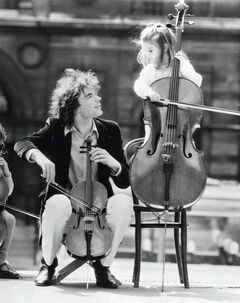 Today's Blog Post is a short one, but it is sweet and true. I came across this picture today while scrolling through Pinterest and it made me think of how much influence parents have on their kids <3 If you have ever gone back and forth about joining your child in taking music lessons, it is something we highly recommend! In a separate post, I talked about tips on how to help your child practice at home. One of the tips was to simply be there, whether you play a musical instrument or not at all. And that is 1100% true; kids tend to practice more when they have someone to share it with! Since converting to our Advanced Program (group lessons), we have many students and their parents who take lessons; some together, some separate. Each gain a broad understanding of what and how to practice that supports the advancement of learning at home and progress, along with developing a relationship formed around music that is priceless! Mary Blevins The adjustment to this new quarantine lifestyle has had it's ups and downs. It has definitely thrown us teachers a curve ball but we are forever grateful for it!
Why? Because we have seen SO man of our students come out of their shell, musically, like we've never seen before. Students are practicing now more than ever, it has opened our business to more possibilities and teaching opportunities around the US, and it has given us insight into the environment in which our students practice. This may seem small but it actually helps us better understand practice habits and routines so that we can adjust our teaching methods as we need per student. With that said, here are some positive benefits of online music instruction: #1: The cancellation of sports and after school activities have significantly increased practice and progress for several students. #2: Students have had to figure out many more things in the music on their own, independently--a great life skill! #3: Online communication will be a standard way to communication for everyone in the years to come. #4: Parents are thrilled to have an activity that can occupy their children that maintains stability of healthy life during this difficult time. #5: Music Education at school might be limited or different these days. Online music instruction allows students to achieve a solid music education. #6: Stopping lessons until in-person lessons can resume will hinder progress! These are just some of the many reasons why continuing with online lessons can benefit your child (: Mary Blevins |
AuthorYour teachers here at The Music Studio want to share their insight on our Music Lessons and provide the tips and tricks needed for a successful music education! Archives
October 2023
Categories |
- HOME
- LESSONS
- PIANO FOR ADULTS
- COMPLIMENTARY TRYOUT LESSON
- TESTIMONIALS
- CURRENT STUDENTS
- REQUEST INFO
- VIDEOS
- PHOTO GALLERY
- GIFT CARDS
- ABOUT US
- FAQ
- The Blog
- AVAILABILITY & PRICING
- SECRET TO GREATNESS
- CHOOSING A PIANO
- EMPLOYMENT
- NORTH STAFFORD
- PARK RIDGE
- EMBRY MILL
- WIDEWATER
- AQUIA
- SOUTH STAFFORD
- MUSICAL JOURNEY
We Would Love to Have You Visit Soon!
Telephone |
|
Hours:M-F, Saturday & Sunday: by appointment only
Phone Hours: M-F 10:00am to 5:00pm Teaching Hours: M-Th 3:00pm - 8:30pm |

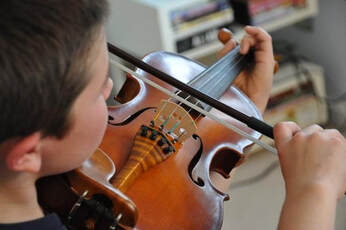

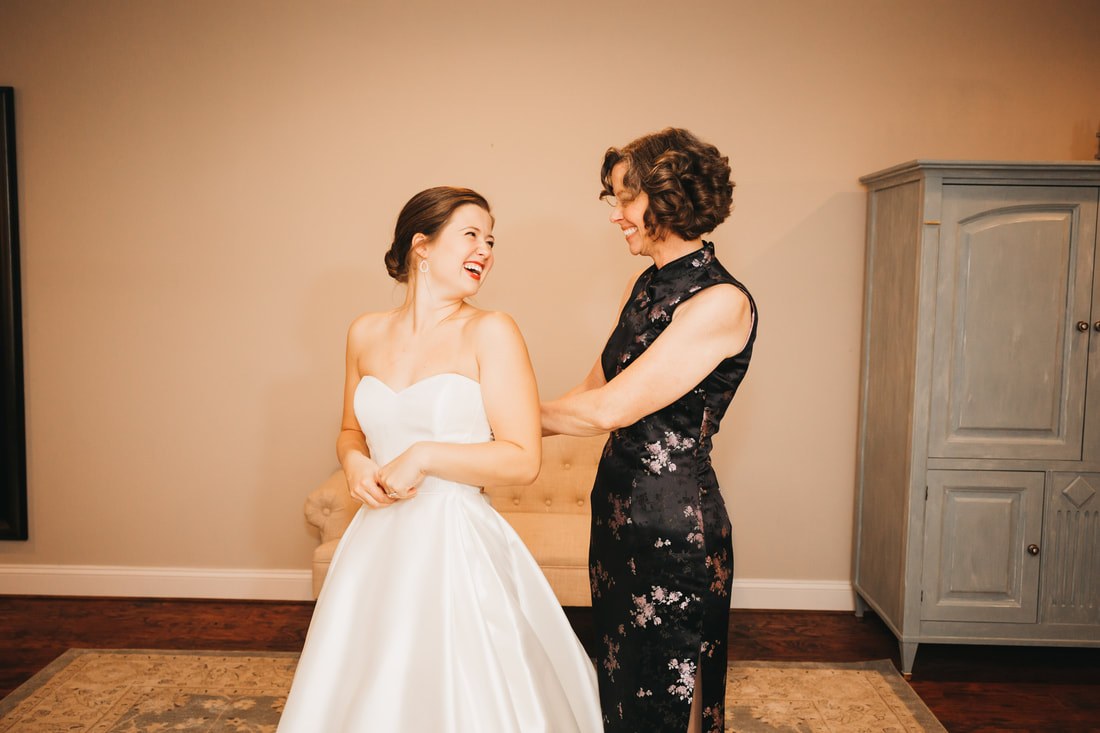
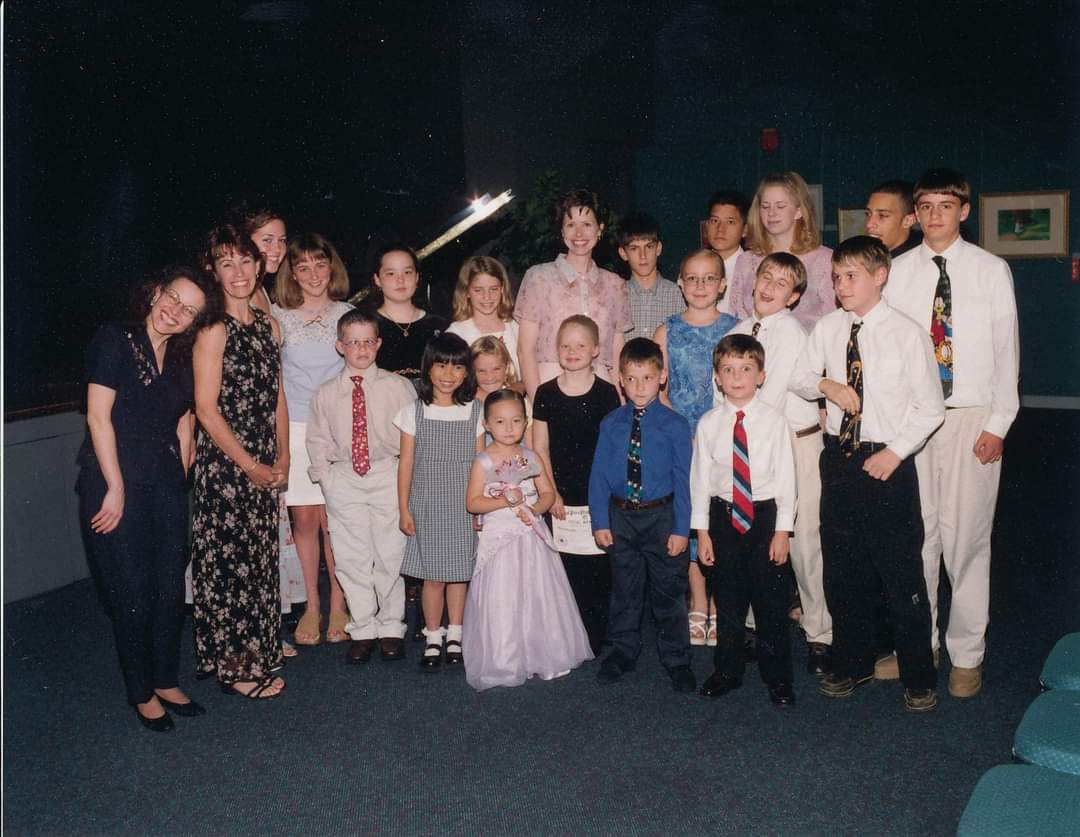
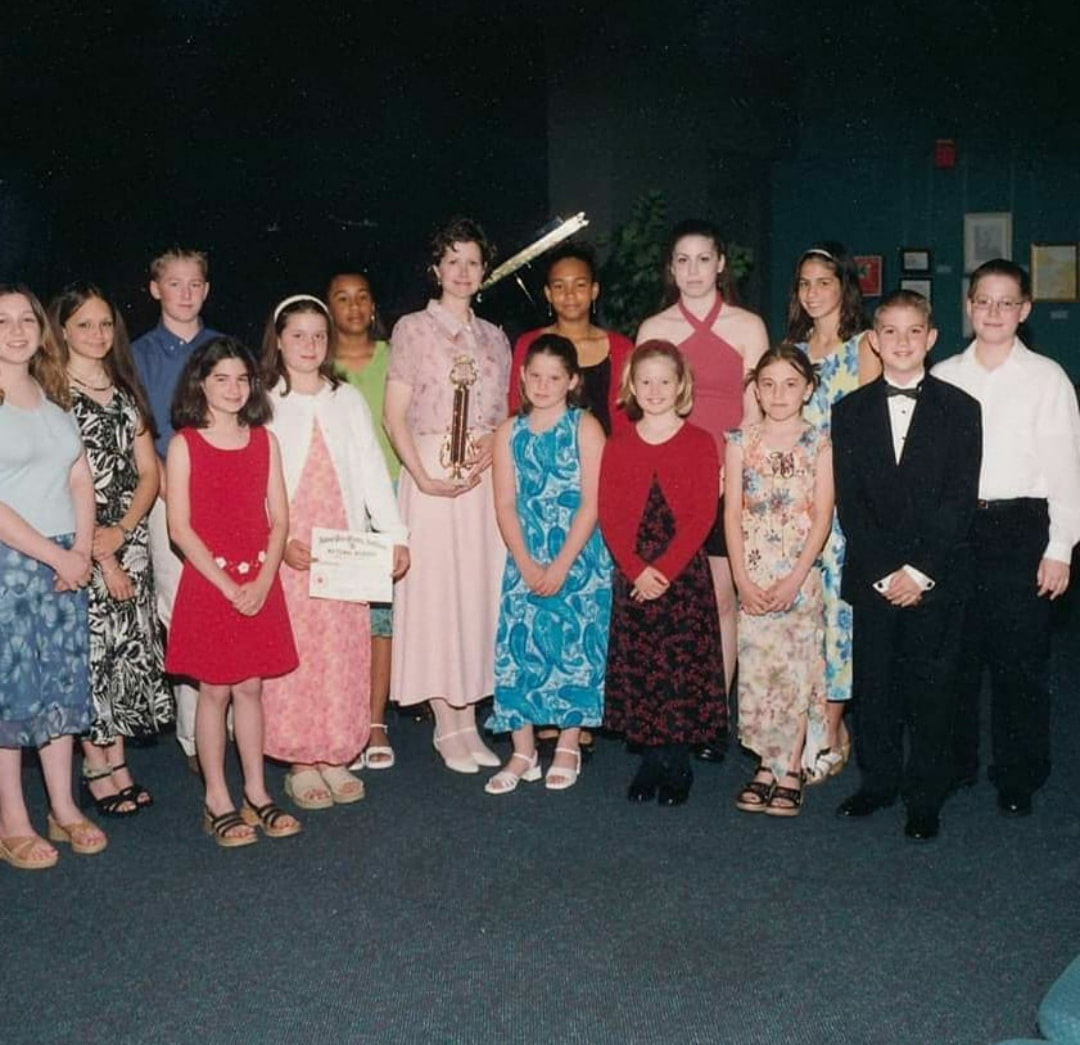
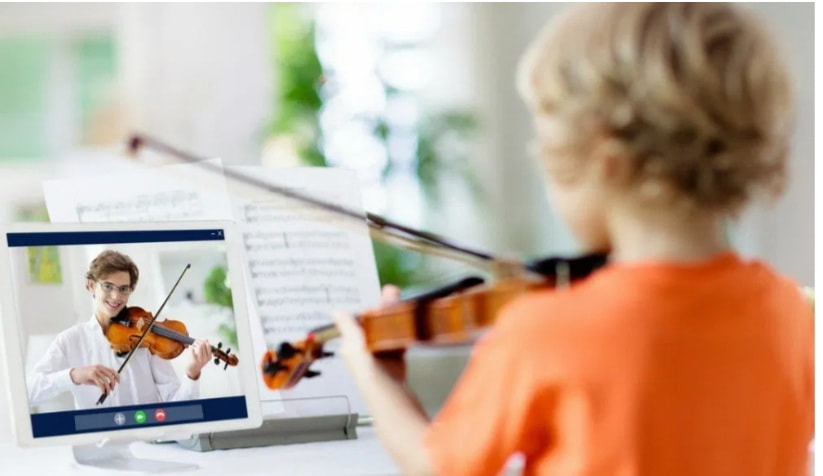
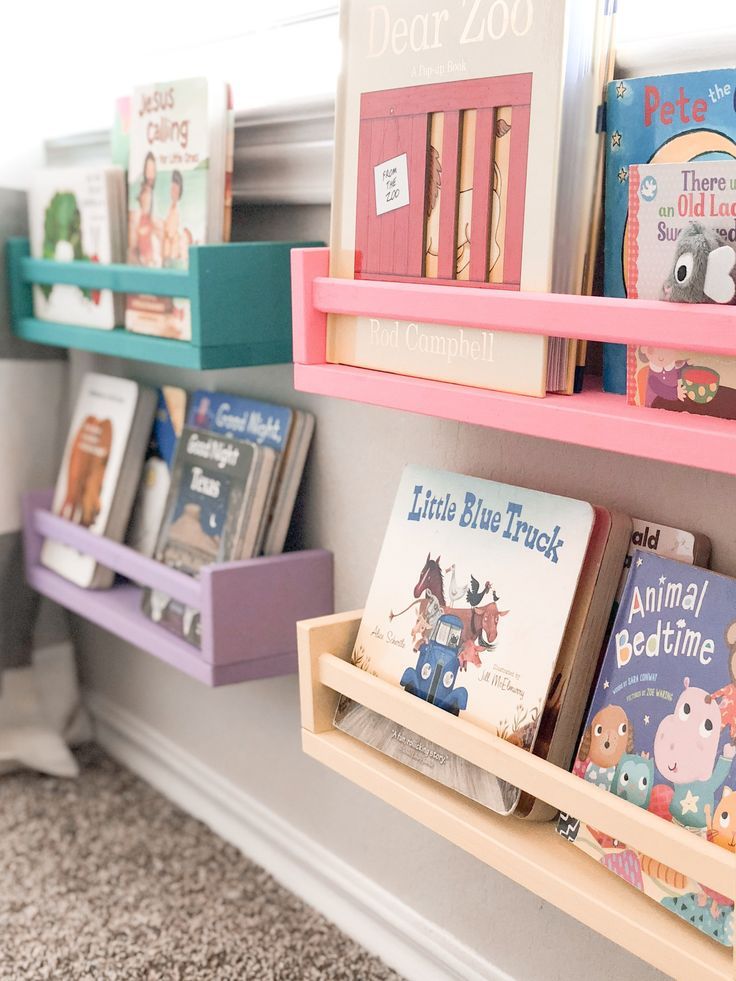

 RSS Feed
RSS Feed
